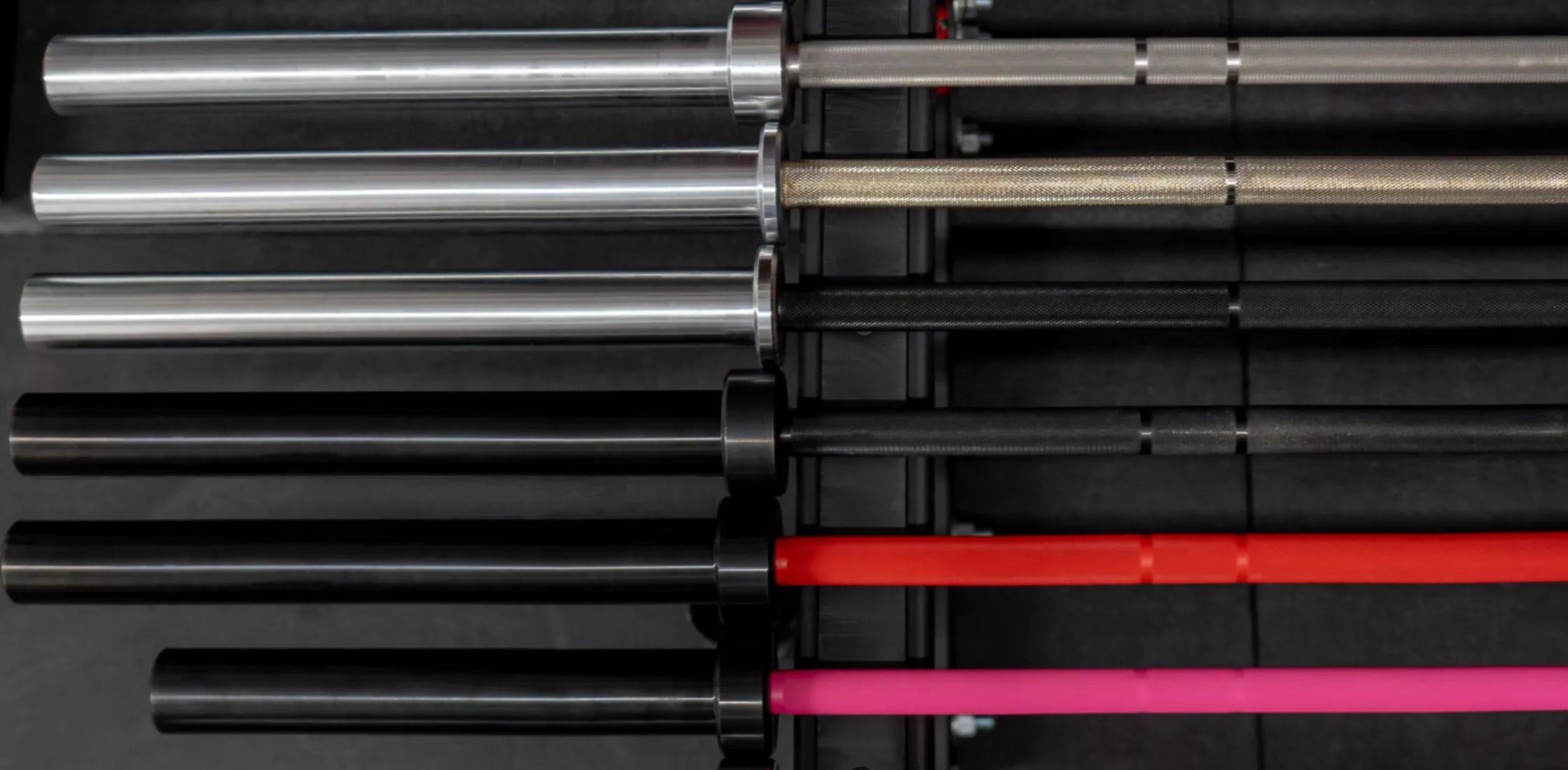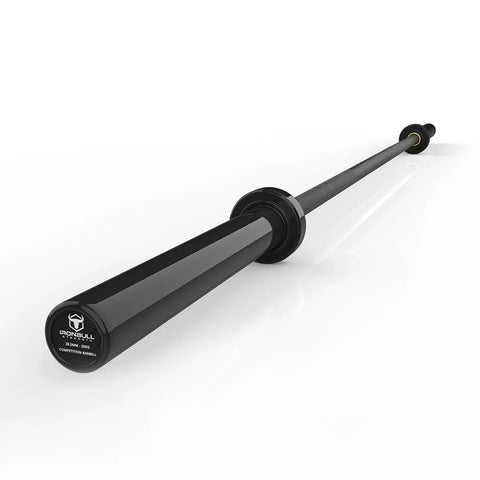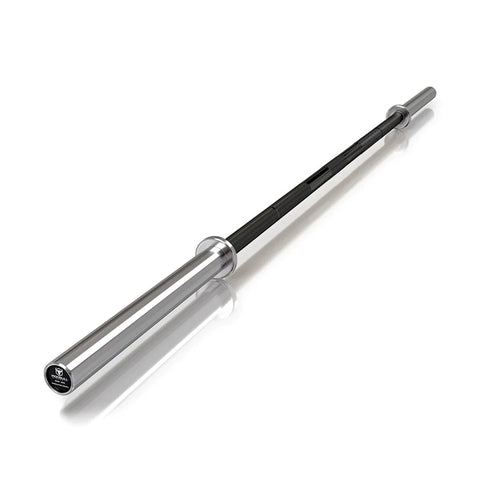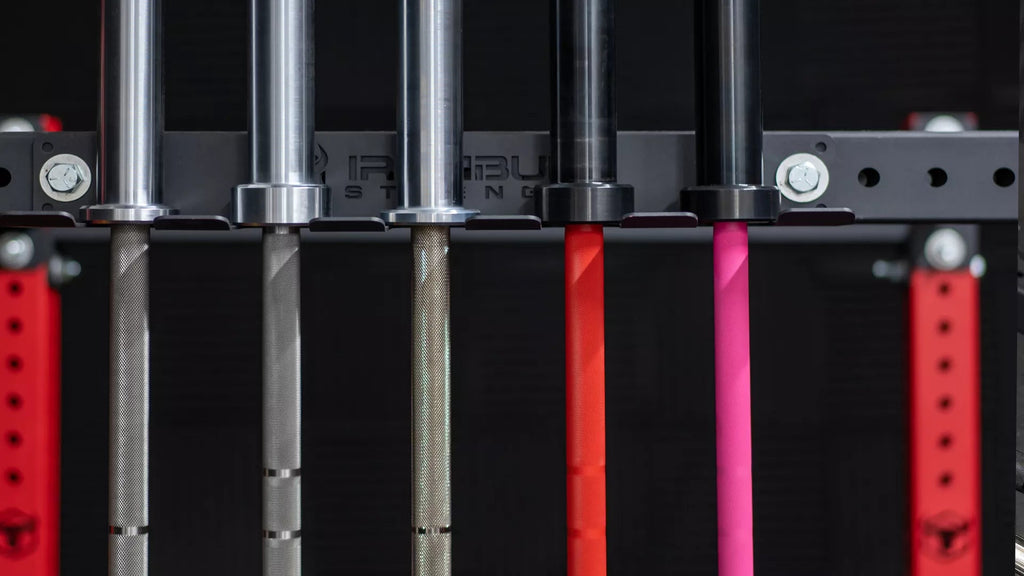What is the Best Barbell for a Home Gym?

When it comes to building a home gym, one of the most essential pieces of equipment you can invest in is a quality barbell. Whether you’re aiming to pack on muscle, increase strength, or improve athletic performance, the right barbell can make a significant difference in your workouts.
But what is the best barbell for a home gym? The best barbell for a home gym depends on your goals and ambitions with strength training. For example, if you are a powerlifter, you are going to want to invest in a high quality power bar. If you are into Olympic lifts, though, you might not want a power bar as this type of barbell is tough, rigid, and provides aggressive knurling that could cause discomfort with the dynamic performance of most Olympic movements.
In this article, we will explore the top six barbells ideal for home use, outlining their unique features, benefits, and how they can enhance your training experience. Additionally, we’ll dive into the advantages of incorporating barbell exercises into your routine, provide insights on selecting the perfect barbell for your needs, and offer tips on proper maintenance to ensure barbell longevity. Not caring for your barbell could ruin your home gym workouts, causing you more money than you think.
By the end of this article, you’ll have the knowledge to select the perfect barbell to take your home gym workouts to the next level. Let’s get right into it!
The Top 6 Barbells for a Home Gym
Tyr to find an image of a home gym to represent the idea of building your home gym
The top 6 barbells for a home gym are:
- Competition Barbell - Best Barbell Overall
- Olympic Barbell - Best Barbell for Olympic Lifting
- Power Barbell - Best Barbell for Powerlifting
- Axel Bar - Best Barbell for Strongman
- SSB Bar - Best Speciality Barbell
- EZ Bar - Best Barbell for Accessory Training
Competition Barbell - Best Barbell Overall

- Weight: 20 kilograms or 44 pounds
- Length: 86.75 inches
- Diameter: 28.5 mm
- Knurling: Medium with Dual Marks and No Center Knurl
- Loadable Sleeves: 16.4in
This is a special bar built by Iron Bull Strength that is a cost-effective bar that will fulfill all of your weightlifting needs. The dual knurl marks provide a secure hold for Olympic lifts, while the smooth rotating sleeves allow for flawless movement execution. Not only is our barbell built to last, but it’s also versatile enough for a wide range of exercises.
This competition barbell by Iron Bull Strength can help you prepare for competition as it can function for all types of weight lifting programming, such as Olympic lifting or powerlifting. This would be a great barbell to meet all your needs with your own home gym.
Olympic Barbell - Best Barbell for Olympic Lifting

- Weight: 20 kilograms or 45 pounds
- Length: 86 inches
- Diameter: 28-29mm
- Knurling Strength: Medium
- Loadable Sleeve: 16 inches
The Olympic barbell is designed specifically for dynamic movements such as the power clean and push press. The Olympic barbell is built with rotating sleeves to help meet the needs of all types of explosive movements you would experience with Olympic lifts. The bar is slightly rigid, but still provides a bend or “whip” to accommodate the explosiveness of Olympic lifts. With a length of 86 inches and medium knurling, it’s a standard choice for Olympic weightlifting movements. This barbell could be used for the big three movements like the squat, bench, and deadlift. However, a barbell with more aggressive knurling might be ideal for these stronger movements to help maintain grip and positioning during each lift.
Power Barbell - Best Barbell for Powerlifting

- Weight: 45 pounds
- Length: 86 inches
- Diameter: 28-30mm
- Knurling Strength: Aggressive
- Loadable Sleeve: 16 inches
The power bar is a variation of the traditional straight barbell but much more stiff and rigid to not bend under pressure, especially in powerlifting. The idea is that with stronger movements like the squat, bench press, and deadlift, you want a stronger bar to counterbalance the movement and feel more capable of your own strength. It also features aggressive knurling to improve grip when lifting heavier loads. This barbell would not be idea for those who do Olympic lifts as this bar is resistant to bending and has an aggressive knurling that could cause damage to the skin during dynamic movement.
If you are looking to get a great power bar, try out Iron Bull’s Zinc Power Bar. This power bar features a deep and coarse powerlifting knurling pattern providing an ideal grip without being sharp or abrasive, preventing the bar from slipping under heavy loads. The sleek finish not only adds a touch of elegance to your gym setup but shields your barbell against corrosion and oxidation, extending its lifespan and performance over time.
Axel Bar - Best Barbell for Strongman
- Weight: 20-45 pounds
- Length: 80-86 inches
- Diameter: 48-50mm
- Knurling: None
- Loadable Sleeve: 15-16 inches
A unique choice for strongman training, the axel bar has a larger diameter and ranges between 20-45 pounds. It challenges grip strength and is commonly used in strongman competitions. Axel bars may not have the same rotating sleeves as other bars which makes it very challenging to use. This is a great barbell to meet the needs of many strongman events. I would not recommend this barbell to anyone who doesn’t do strongman as the features of this barbell don’t suit most traditional movements in strength training.
‘
SSB Bar - Best Speciality Barbell
- Weight: 45-65 pounds
- Length: 86-92 inches
- Diameter: 40-43 mm (handles)
- Knurling: None
- Loadable Sleeve: 15-16 inches
The squat safety bar (SSB) is a great specialty bar to help your training, especially on leg day. It is ideal for individuals with shoulder mobility issues or those looking to target their lower body without compromising form. The SSB bar features unique shoulder pads that distribute weight evenly, reducing strain on the shoulders and upper back during squats. However, the SSB does put weight higher on the torso, so it is a challenge for your postural muscles the heavier you get. You can also train unique exercises with the SSB bar like the Hatfield Squat, which reduces recruitment of those postural muscles and starts to massively overload the leg muscles.
EZ Bar - Best Barbell for Accessory Training
- Weight: Around 25 pounds
- Length: 46-48 inches
- Diameter: 28 mm
- Knurling: Light - Medium
- Loadable Sleeve: 6-8 inches
The EZ bar is a uniquely designed bar that allows more comfort with accessory exercises that relate to upper body muscle groups like the biceps and triceps. This is a great accessory tool that will help you overload your anatomy without having to use a length straight bar or having to own a series of weighted dumbbells that might take space with your home gym set up.
Benefits to a Home Gym Barbell
Some of the biggest benefits to having a home gym barbell are:
- Strength development
- Muscular hypertrophy
- Versatility
Strength Development
Barbells allow for compound movements that engage multiple muscle groups simultaneously, promoting functional strength development. Exercises like squats, deadlifts, and bench presses require coordination, balance, and core stability, translating to improved performance in daily activities and sports.
Muscle Hypertrophy
Barbells provide an effective means of stimulating muscle growth. By lifting heavy weights with proper form and progressively overloading the muscles, individuals can trigger hypertrophy, leading to increases in muscle size, strength, and definition.
Versatility
With a barbell, you can perform a wide range of exercises targeting various muscle groups. From classic compound lifts like squats, deadlifts, and rows to isolation exercises such as bicep curls and tricep extensions, the versatility of barbell training enables you to create diverse and effective workout routines.
How to Choose the Right Home Gym Barbell
In order to choose the right barbell, you need to:
- Identify training goals
- Evaluate exercise selection
- Training intensity
Identify Your Training Goals
Before purchasing a barbell, clarify your fitness objectives and the type of exercises you plan to perform. Are you primarily focused on powerlifting, weightlifting, bodybuilding, or general strength training? Understanding your goals will help narrow down the options and determine which type of barbell is most suitable for your needs.
Evaluate Exercise Selection:
Pay attention to key specifications such as bar length, diameter, weight capacity, and knurling. Standard Olympic barbells typically measure 7 feet in length and have a diameter of 28-29mm, while powerlifting bars may be shorter and thicker with more aggressive knurling for better grip. Choose a barbell with appropriate specifications based on your body size, lifting style, and comfort preferences.
Training Intensity
The sleeves of a barbell should rotate smoothly to reduce friction and wrist strain during lifts. Look for barbells equipped with quality bearings or bushings that facilitate effortless sleeve rotation, allowing for smoother and more controlled movements.
Taking Care of Your Home Gym Barbell
Someone doing the deadlift exercise
Proper maintenance is essential to prolong the lifespan and performance of your barbell and ensure safe and effective workouts. Here are some tips for taking care of your barbell:
- Clean Regularly: After each use, wipe down the barbell with a clean, dry cloth to remove sweat, chalk, and debris that can accumulate on the shaft and sleeves.
- Inspect for Damage: Regularly inspect your barbell for signs of wear, damage, or defects, such as bent shafts, loose sleeves, or worn knurling. Knowing when these occur can help you reduce future damage.
- Store Properly: Store your barbell in a dry, climate-controlled environment away from moisture, humidity, and extreme temperatures. Use barbell storage racks or horizontal holders to keep the barbell upright and prevent warping or bending.
- Lubricate Sleeves: Apply a thin layer of barbell lubricant or oil to the sleeves periodically to maintain smooth rotation and reduce friction.
- Avoid Dropping: Minimize dropping or slamming the barbell on hard surfaces, as this can cause damage to the shaft, sleeves, and internal components. Use bumper plates or lifting platforms to absorb impact and protect the barbell during heavy lifts and drops.
Conclusion
In conclusion, selecting the best barbell for your home gym is a pivotal decision that can significantly impact the effectiveness and enjoyment of your workouts. Whether you’re focused on powerlifting, Olympic lifting, strongman training, or accessory exercises, there’s a barbell tailored to meet your specific needs and goals. From the versatile Competition Barbell to the specialized SSB Bar and EZ Bar, each option offers unique features and benefits that enhance strength development, muscle hypertrophy, and overall versatility in your training routine.
Moreover, proper maintenance and care are essential to ensure the longevity and performance of your barbell investment. By regularly cleaning, inspecting for damage, storing appropriately, lubricating sleeves, and minimizing impacts, you can preserve the integrity of your barbell, preventing premature wear and tear while promoting safe and effective workouts. With the knowledge gained from this guide, you’re equipped to make an informed decision in selecting the perfect barbell to elevate your home gym experience and take your fitness journey to new heights.


